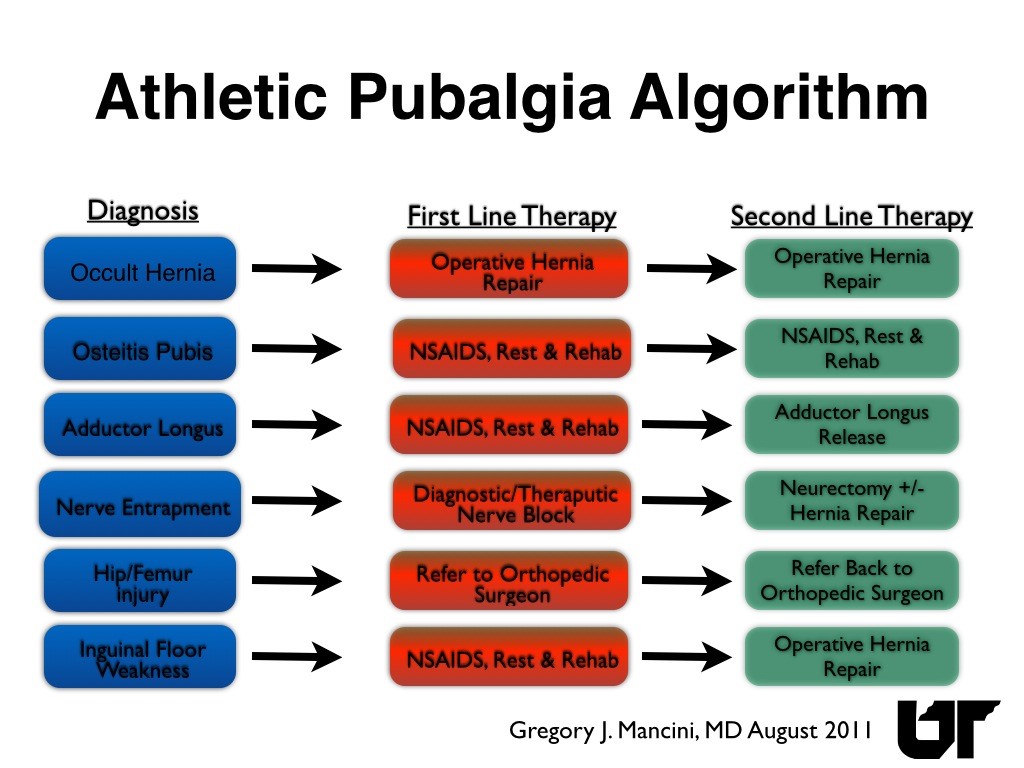Specializing in-
Sports Hernia Repair
WHAT IS A sports Hernia?
A sports hernia (Athletic pubalgia) is a fashionable name used by both patients and physicians to describe what is a poorly understood and often erratically treated patient condition. A sport hernia can more clearly be defined as pain in the groin region brought on by aggressive physical activity and relieved by activity cessation. Rather than being a single entity disease with a root cause and simple treatment plan, sports hernia is a cluster of different diseases that have both overlapping symptoms and common physical triggers. Sports hernias are most often not true groin hernias rather they are are found to be an occult inguinal hernia, osteitis pubis, adductor tendonitis, occult hip injuries, or a regional nerve entrapment syndrome.
The chronic painful symptoms occur in otherwise healthy, athletic, and young individuals and adds a psychosocial layer to an already complicated medical condition. Most injuries that athletes deal with results from a single action or collision. There are obvious physical findings of this injury such as swelling or a contusion. These injuries are routine and fully heal with time and basic care. But athletic pubalgia is much more insidious. It develops slowly overtime without pain until a relatively minor event halts the activity. There is rarely any outward sign of the injury. The pain may not be present with walking or light physical activity, but only at full athletic speeds. In athletic pubalgia, the routine 2 to 4 weeks of rest is often not sufficient for full resolution of symptoms. The resulting confusion and misinformation have clouded the understanding of athletic pubalgia for athletes, trainers, coaches, parents, and even most medical professionals.
The evaluation and management of sports hernias requires time, patience, and realistic expectations. A thorough physical exam, discussions with the patient and team trainer, and a sports hernia designed pelvic MRI can help define the root cause of the patient’s physical pain. We use the following treatment algorithm based on our evaluation.


